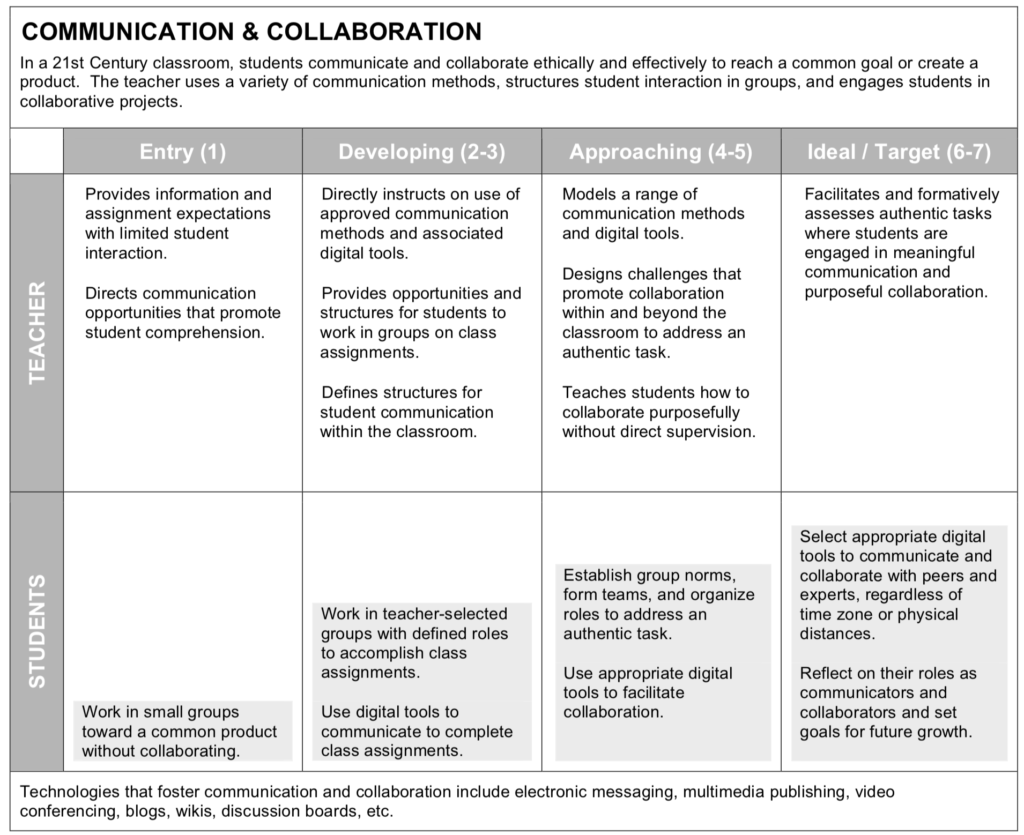Collaboration | Science of Collaboration | First Action Steps | Application Strategies
First Action Steps:
for Classroom/School Culture of Collaboration
The methods and decisions for creating a Collaborative Culture in a classroom, school, and organization are many, and difficult. One major obstacle is building buy-in for a common understanding. Before implementing strategies that support collaboration, a common path must be chosen and followed. Here are three practical steps towards moving in a common and collaborative direction =>
Step One: Establish a working definition
Take time to research the purpose and value of Collaboration. Explore different definitions and then adopt or craft one with all relevant stakeholders.
Step Two: Adopt a guiding structure and/or guide that defines quality of practice
There are resources to be found, evaluated, and used to design how a culture of Collaboration should look like in a classroom or school.
- Henrico TIP Chart (PDF –Download)
Henrico County Public Schools created a framework guide for how they teach, coach, and assess effective use of Collaboration and other 21st Century Skills. The TIP Chart is used by teachers to reflect on how they are teaching and coaching Collaboration, and how students should be applying the skills as part of the learning experiences.
 The progression from left to right moves from teacher directed to student-led. Because of the depth in application of collaboration, the learning cycle from Developing to Target is continuous.
The progression from left to right moves from teacher directed to student-led. Because of the depth in application of collaboration, the learning cycle from Developing to Target is continuous.
Step Three: Design a Coaching Chart that defines observable behaviors
Coaching Collaboration is a Three-Way street. Growth occurs based on feedback from the teacher, peers, and self-reflection. Using a rubric might help by describing what Collaboration looks like and does not look like. This approach can lead to assessment of the practice. I’ve noticed from experiences with many schools that teachers and students struggle with how best to use rubrics without other supports.
Coaching Charts are such a resource that supports skill development with concrete and observable descriptors of behaviors. Here is one example from a school in Michigan:
The Coaching Chart can be used by students for independent self-reflection, and for supporting and giving feedback to their peers. Teachers use the chart to coach students on how to use the chart as a support tool for the team, and to give feedback on how a student is progressing. Once in place, strategies that depend on Collaboration can be monitored and evaluated for success by the teacher and students. Here is a sample of one such Coaching Chart that is formatted for teachers and learners to use to provide feedback:
PDF – DOC – Google Doc
Next: Application Strategies
Collaboration | Science of Collaboration | First Action Steps | Application Strategies

